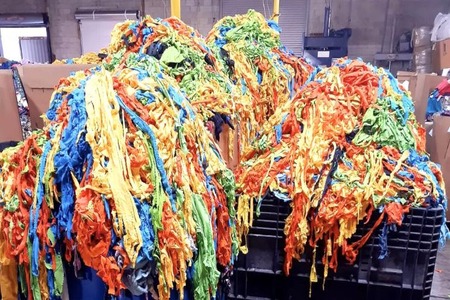
Shenkar creates smart fibers to detect toxic gases
YarnsandFibers News Bureau 2025-01-09 14:36:13 – IsraelThe Department of Polymer Materials Engineering at Shenkar has developed innovative smart fibers as part of the "Future Soldier" project, funded by the Ministry of Defense. This groundbreaking technology is designed to assist soldiers on the battlefield by changing the color of their clothing from yellow to green when exposed to toxic gases. It also has potential applications in chemical industries, providing workers with a direct, visible indicator of toxic gas exposure.
This technology was developed through collaboration among Shenkar’s Polymer Materials Engineering and Electrical and Electronics Engineering Departments, the Textile Research Center, and the German Fraunhofer Institute. Funded by MAFAT, the fibers are created using a polymeric material that reacts to ammonia gas by altering its chemical properties, including color and electrical charge. These fibers can be integrated into textiles for industrial production.
Prof. Elizabeth Amir, head of the Chemical Engineering Department at Shenkar, explained that the active material in the sensor is an organic molecule capable of reacting with toxic gases like ammonia. She highlighted that ammonia was chosen for its prevalence and high toxicity, as exposure to high concentrations can cause severe health damage or even death.
Prof. Amir emphasized that the innovation lies in the development of a continuous textile fiber that acts as a gas sensor. Previously, such detection materials were only available in powder form. This advancement allows the fibers to be woven or knitted into fabrics for practical use in various settings.
The technology also has future potential for integration with electronic systems embedded in fabrics. For instance, in industrial settings, it could send alerts to control centers about possible gas contamination. Researchers are working to adapt the technology for detecting other hazardous gases commonly encountered in military or industrial environments.
Beyond defense and industry, this Israeli innovation has promising applications in commercial sectors like food packaging. Prof. Amir noted that smart packaging could provide real-time indicators of product spoilage, such as the release of ammonia and sulfur gases from expired meat or fish. Similar applications could extend to cosmetics and other industries, marking a new generation of intelligent packaging systems.
Market Intelligence
Ask for free sample Report

experience
Customer Base
dedicated team
Countries Served Worldwide









